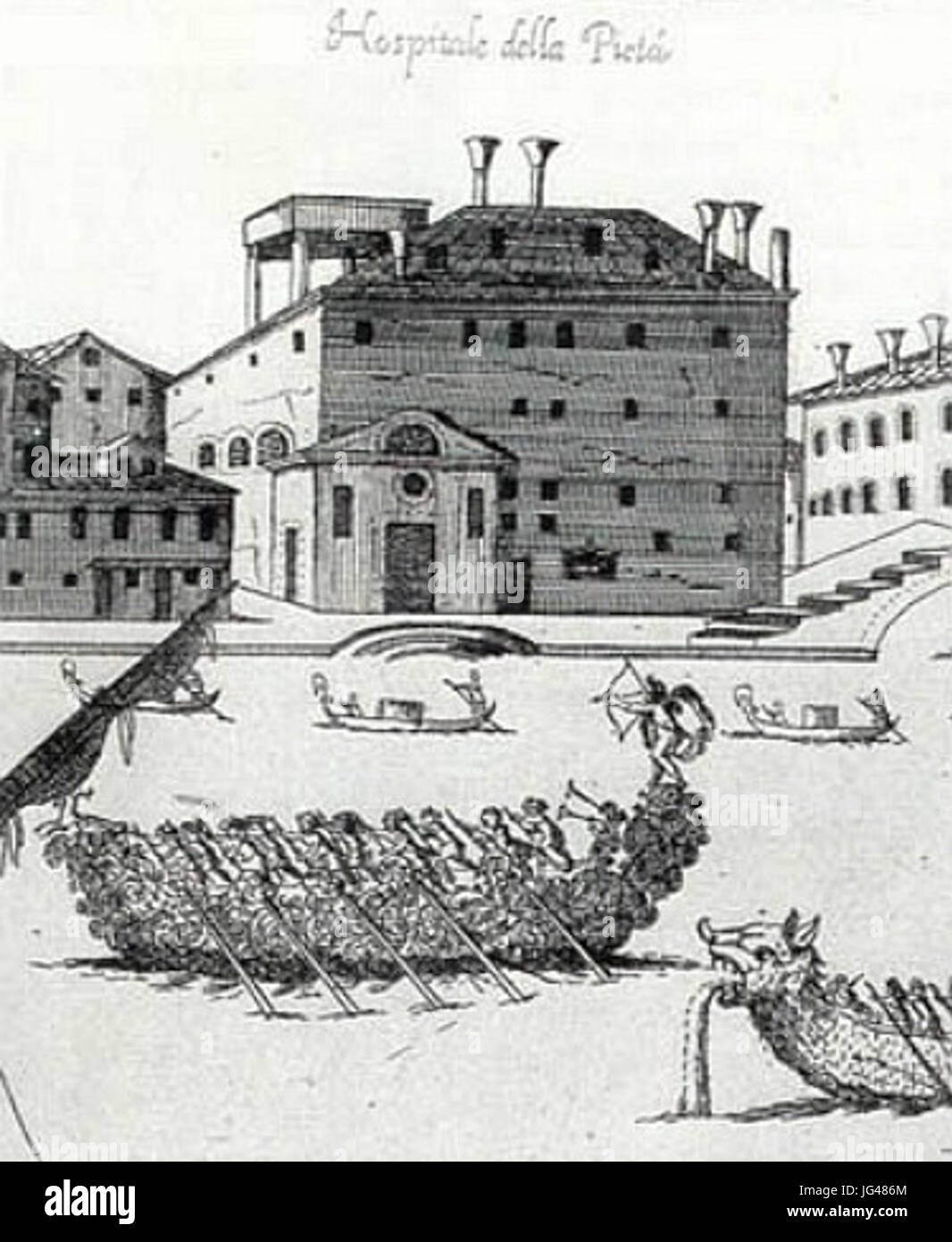Vivaldi Gloria at La Pieta These ensembles performed at a high level, and for reasons that were unique to the ospedale. Importantly, the membership was stable, which enabled the women to build ensemble skills with their colleagues, and they were also allowed a great deal of rehearsal time.

For his first years as violin teacher at the Ospedale della Pieta we must imagine him as having been industrious in his activity as a pedagogue and composer; the institution’s administrators soon acknowledged his successes: in 1708 he was given a pay rise, and in 1711 Vivaldi stepped into a vacated position which held a secure yearly wage. The Gloria in D is probably one of his best known sacred works, but it also reflects Vivaldi’s other skill as an opera composer, which he regarded as a distraction from his day job at the Pieta. Venice in the early 18th century was the pleasure centre of Europe, and a visit to the opera was part of the court and social life of the city. The Ospedale della Pieta' still operates today as a non-profit agency that provides early childhood education and assists children and mothers in crisis situations. Vivaldi was called 'Il. Venice, Vivaldi, and the Ospedale della Pieta' This seventeenth-century illustration of the Ospedale della Pieta' from the Correr Museum in Venice shows the building as it probably looked in 1715. This is the Ospedale that Isabella and her friends would have known.

Vivaldi's Gloria is one of sacred music's most uplifting choral works - a piece of high drama and hidden performers
Some time ago, I eagerly began a holiday in Venice, desperate to follow in Vivaldi’s footsteps. Imagine my disappointment when I got to the famous orphanage turned music school where he worked - the Ospedale della Pieta - only to discover it had been turned into an hotel. I shouldn’t have been surprised. The Riva degli Schiavoni bordering the Canale di San Marco is now prime Venetian real estate, thronging with tourists and souvenir sellers. I hoped for better luck with the Ospedale’s church - the Santa Maria della Pieta - next door. But that was boarded up with graffiti scrawled over the double doors. I didn’t feel too let down, though, since the present church was built after Vivaldi’s death in 1741! It’s still known as Vivaldi’s church, and I’m told that it is now cleaned up, open for worship and home to some wonderful baroque concerts.
I wanted to imagine myself in the place where some of Vivaldi’s most glorious music was performed by the young women who were taken in as orphans by the Ospedale, one of four important Venetian orphanages which placed a special emphasis on teaching music. These ‘orphans’ were usually the illegitimate daughters of the city’s wealthy noblemen and their numerous mistresses, which explains the generous endowments that meant the girls were well cared for and given the best musical tuition available. Despite being ordained as a priest in 1703, Vivaldi was appointed the violin master at the Ospedale and his association with the music school lasted until 1740, by which time his reputation in Europe had been secured thanks largely to the wonderful performances of the girls he instructed.

The Gloria in D is probably one of his best known sacred works, but it also reflects Vivaldi’s other skill as an opera composer, which he regarded as a distraction from his day job at the Pieta. Venice in the early 18th century was the pleasure centre of Europe, and a visit to the opera was part of the court and social life of the city. Despite a licentious reputation, the opera houses were required to close for all important religious festivals and Saint’s Days. But Venetians and their visitors still wanted to be entertained. Vivaldi’s all-women orchestras and choirs were legendary sensations, but the girls needed to be protected from noblemen and travellers to the city. To keep them sheltered from the corruption and decadence of the visiting public, the girls sang from the upper galleries of the church, hidden behind the patterened grills, which only added to the theatrical sense of drama matched by Vivaldi’s music. Those young men in Venice for a stop on the Grand Tour flocked to Vivaldi’s church to hear these mysterious women seen only in silhouette, but sounding like angels.
Vivaldi Pieta
The Gloria itself is a joyful hymn of praise and worship divided into 12 relatively brief movements, ranging from festive brilliance to profound sadness. Yet it’s a mark of Vivaldi’s skill that the work overall maintains a cohesive structure. He prepares us from the very beginning, with the distinctive opening chorus, yet within minutes we’re deep in meditation with the second poignant movement ‘Et in terra pax hominibus’. From lilting soprano solos to solemn choral singing with duets and four part harmonies, this really is a masterclass in choral writing. But Vivaldi, always the great instrumentalist, doesn’t forget his musicians. There are opportunities for tender, lovely countermelodies played variously by the violin or the oboe.
Ospedale Della Pieta Antonio Vivaldi
The finale brings the work together in a vivid but effective composite of all we’re heard before. Vivaldi has thrown in music which feels part concerto, part opera - but the effect is one of sacred music’s most uplifting choral works.


